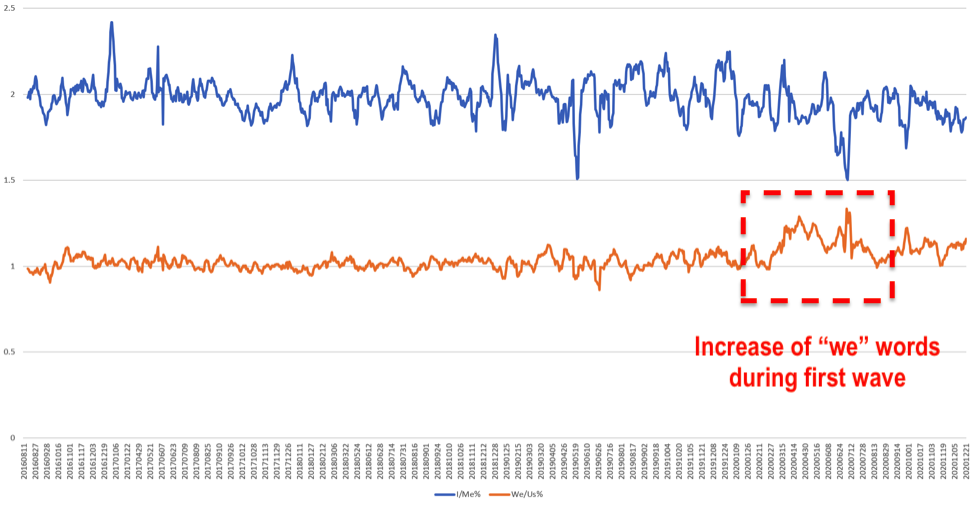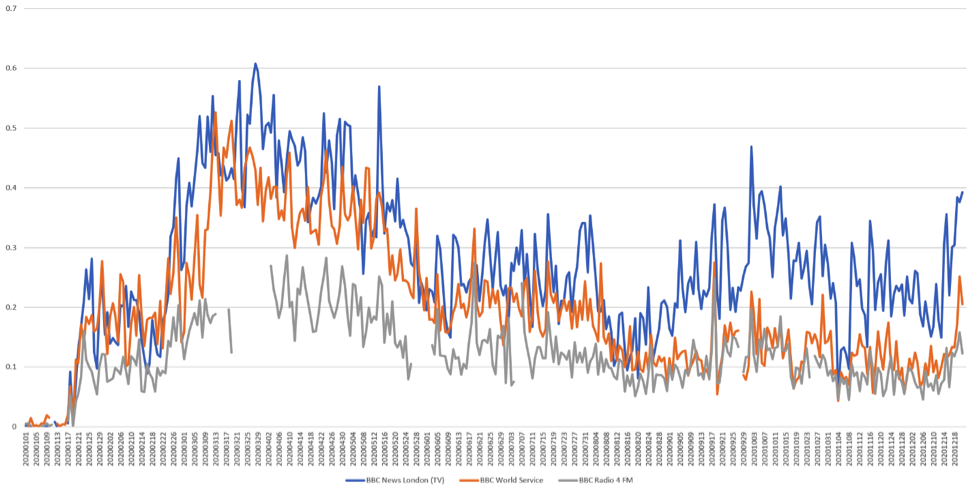
Whether Taylor Cole Miller is assigning a project for his communication studies classes or putting together a video for TikTok (@tvdoc), this TV historian says he appreciates tapping into vintage video and audio material from the Internet Archive.
The vast collection of old radio and television shows available at archive.org has allowed his students to analyze the early days of broadcasting and inform their work, says Miller, an assistant professor of media studies at the University of Wisconsin-La Crosse. While the wide variety of materials help students understand the breadth of media history, one item in particular has become an indispensable part of Miller’s curriculum: On September 21, 1939, CBS affiliate WJSV was asked by the National Archive to record an entire day of radio programming — a gem now for students to get a glimpse at 19 hours of news, soap operas, and commercials that aired.
Listen to Complete Broadcast Day (1939) at the Internet Archive
“What you get is basically everyday radio, which you wouldn’t normally have access to,” Miller said of the resource available through the Internet Archive. “It’s a real opportunity for my students to listen and get a sense of what broadcasting was like.”
What his students hear that day is Franklin Roosevelt addressing the U.S. Congress about the proposed revision to the country’s Neutrality Act in WWII. Students are exposed to racism in the dramas, and ways advertisers were influencing people to buy products from Alka-Seltzer to Mounds candy bars.
At the time, federal regulations mandated and enforced balanced coverage of news — rules like the Mayflower Doctrine and its predecessor the Fairness Doctrine, which President Ronald Reagan eliminated in 1987. This provides an important lesson in navigating today’s media landscape. “Getting them to experience what news was, in order to understand what news is, is also broadly useful,” said Miller, who is director of the university’s Communication and Media Lab.

Just as an English professor needs books to teach, Miller said, he relies on the artifacts at the Internet Archive to show his students different samples of media over time. Miller’s students review episodes of The Shadow and listen to War of the Worlds to discuss media literacy as the supposed panic from the fictional radio show about a Martian invasion was more likely newspapers perpetuating a myth to delegitimize radio news.
Miller also teaches digital media production, where students make their own podcasts, and the historic audio can demonstrate techniques of storytelling, the power of sound effects, and the influence of advertising on the process. Students choose events to research and make their own radio dramas or TikToks.
Miller said he finds students invest more time in the research and production of assignments that are posted for the public since they know they will be seen by a wider and more critical audience.

That reach is also why Miller himself has been active on TikTok since 2021. As @tvdoc, Miller regularly creates 3–6 minute videos about everything from coverage of the O.J. Simpson car chase to behind-the-scenes tales from the classic sitcom, Bewitched. Miller said he likes to introduce viewers to publicly available resources so they can discover more about TV history on their own.
“The Internet Archive provides opportunities for amateur researchers to make a difference in our understanding of media history — and that is so critically important, particularly for local or syndicated television,” Miller said.
Miller’s TikTok audience includes other academics, fans of early TV, and the public at large.
“I think of it as an extension of my teaching,” Miller said. “I’m providing an opportunity to show the nuance of media history as it relates to American cultural history.”
Miller hopes his efforts bring needed attention to the role of preserving and analyzing media history. He was recently asked by the U.S. Library of Congress and its National Radio Preservation Task Force to promote the work of scholars in this field.
“Teaching the public is not only rewarding, personally, but it’s important for helping expand media literacy,” Miller said.


